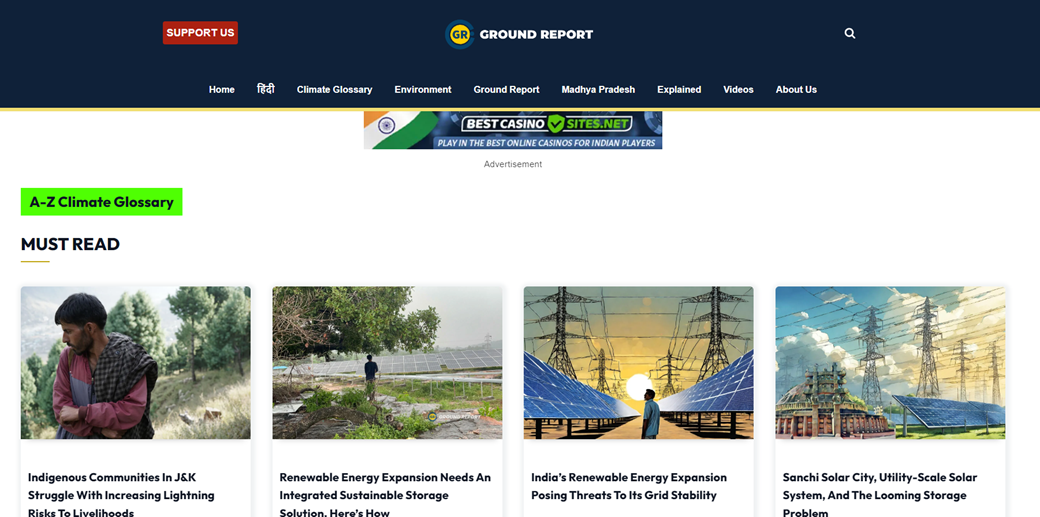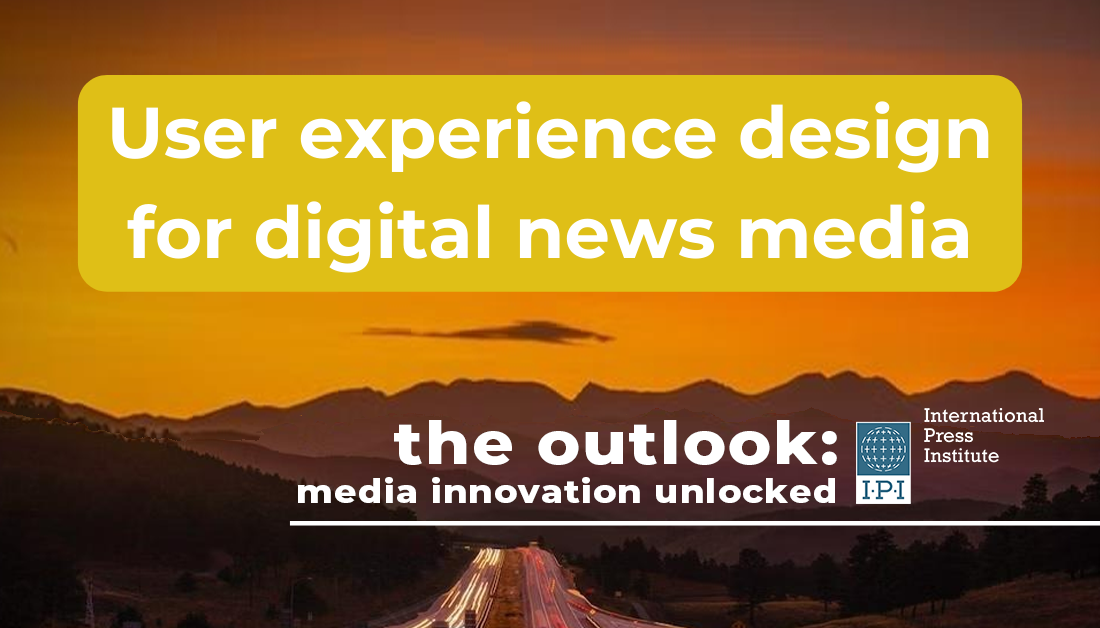This text comes from IPI’s newsletter The Outlook. Click here to sign up to receive future editions direct to your inbox.
This is The Outlook, IPI’s media innovation newsletter, where we take a look at strategies and tools for innovation and business development, and learn from newsrooms that are implementing them. We’ve also published a partial list of the panels for our Media Innovation Festival in Sarajevo this May, so do check that out and register!
This week we’re exploring user experience design, something which IPI and our media coaches worked with several young digital media on during our Local News Accelerator.
The challenge: Optimizing user experience with limited resources
User experience (UX) is how your end-user interacts with your product. UX design relates to how you position and display information, including size and colour of text and image placement on your website or mobile app.
The advent of social media and over-the-top (OTT) streaming has revolutionized how users consume media, news and information. Significant budgets and tech know-how allow many competitors – not only other news outlets but also social media, TV and film streaming platforms – to create extremely usable, even addictive experiences. This raises users’ expectations for how seamless their digital experience should be.
The solution: Understand why users visit your website
The good news is you don’t have to overstretch your resources by building complex websites or a more innovative design. If you’ve put the effort into producing news that serves a purpose for your target audience, improving your user experience is as simple as making sure your website communicates that purpose clearly.
Izabela Moi, co-founder of Agencia Mural, worked with several teams in the Local News Accelerator to identify changes they could make to their websites.
One example is Ground Report. Production Head and Special Correspondent Rajeev Tyagi sums up their identity like this: “Ground Report is where you can come to get a comprehensive understanding of India’s fight against climate change.”
But this wasn’t immediately clear from their website. Izabela worked with the team on simple but impactful changes.
The Ground Report team reduced the number of stories on the homepage and increased image size, in order to avoid overwhelming visitors. The top of the page now showcases curated ‘must read’ stories which best represent the in-depth, climate coverage. The accompanying pictures and headlines give a clear indication of the outlet’s focus.

Tyagi and his team also tweaked the categories featured at the top of the page, allowing users to choose to engage with the subjects they are most interested in. Meanwhile, they redesigned their site to improve the the position of buttons, or “calls to action”, that take users to the outlet’s donations page, and to subscribe to their regular newsletters
Improving user experience takes trial and error as you observe and learn from how people respond to the changes. The Ground Report team plan to follow their analytics to see what the impact of the update is on user behaviour, but user feedback so far has been positive.
💡The Takeaway: User experience is all about clear communication.
If you have the resources for tools like personalizing your homepage with AI or beautiful multimedia features, that’s great. However, the first step is to ensure your website tells your audience who you are and what you offer them in an accessible way.
As well as the target audience for your content, there may be other audiences you want to factor into your design.
For example, other teams in the Local News Accelerator chose to build spaces on their websites to document the impact of their journalism (for potential and existing funders) or to showcase what they can offer to potential partners in the form of media kits and mission statements (for potential and future partners and advertisers).
News from IPI’s Media Sustainability Team
An update from the IPI community: Transition Accelerator alumni Andererseits is launching a new weekly newsletter to help you better understand disabilities and issues related to them. Lean more and sign up here (in German).
Meanwhile, we’re excited to share the programme for the IPI World Congress and Media Innovation Festival. It’s two events in one, with tickets covering all events, and further sessions to be announced in the coming weeks.
Speakers announced for the innovation panels so far include Bhrikuti Rai (Boju Bajai, Nepal) and Laura Aguirre (Alharaca, El Salvador) who will be breaking down the steps needed to build a feminist media outlet, and Izabela Moi (Agencia Mural, Brazil) and Bilal Randeree (MDIF) who will share strategies for sustainability in local news. Join us in Sarajevo to be part of the conversation.
Funding opportunities for media
- The Fellowship for Advancing Science Journalism in Africa and the Middle East will offer a $40,000 stipend plus an additional housing stipend and health insurance to support one fellow to participate in the Knight Science Journalism Program in the fall semester of this year. It’s open to journalists from the region with at least three years’ experience in covering science, health, and the environment. The deadline is March 1.
- There are a few more opportunities combining travel and training. The BBC News Komla Dumor Award is open for applications from journalists living and working in Africa, and the successful applicant will receive three months’ training with the BBC in London, with a £7,000 stipend and travel, accommodation and visa costs covered. The deadline is March 15.
- Young professionals from the MENA region aged under 45 can apply to the MENA Scholarship Programme in the Netherlands for a fully-funded short course. The website has more details about eligibility and the specific programmes and deadlines, which vary depending on the country you’re from, but several of the courses are journalism-focused.
- IPI and the Media Development Foundation have opened a call for the Media Blend Hackathon. It’s open to journalists and newsrooms from the EU, Western Balkans, Ukraine, and Moldova who have ideas for a media project to support regions facing democratic challenges. The deadline is March 10.
- The Professional Fellows Program for Emerging Media Leaders from ICFJ is open to media professionals from Latin America, the Caribbean, or the US, to participate in an exchange programme. The programme includes a three-month virtual training from September to November 2024, with the exchange happening May to July 2025. The deadline is March 11.
- Freelancers: You can apply for IJ4EU’s Freelancer Support Scheme from IPI and partners, which provides teams of journalists working outside of newsroom structures with grants of up to €20,000 along with mentoring and coaching support. The deadline is March 31.
- Also from IJ4EU, the Investigation Support Scheme provides financial support of between €5,000 and €50,000 to cross-border journalistic teams working on investigations of public interest in Europe. This is also a March 31 deadline.

